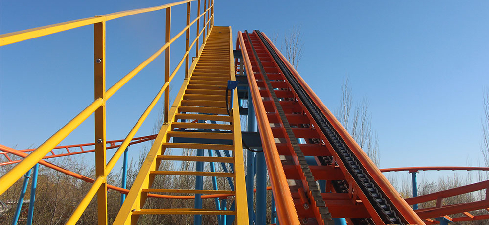- Albanian
- Arabic
- Belarusian
- Bengali
- Czech
- English
- French
- German
- Hebrew
- Hungarian
- Indonesian
- irish
- Italian
- Japanese
- kazakh
- Persian
- Russian
- Thai
- Uzbek
- Vietnamese
Exploring the Art of Flume Ride Design and Experience Enhancement
Flume Ride Design A Splash of Creativity and Engineering
Flume rides are an exhilarating attraction found in amusement parks and water parks worldwide. With their combination of thrilling drops and serene waterway experiences, flume rides offer a unique blend of excitement and relaxation. Designing a successful flume ride requires a careful balance of creativity, engineering, safety, and guest experience considerations. In this article, we explore the essential elements involved in flume ride design and the impact such attractions have on park visitors.
At the core of flume ride design is the waterway itself—a winding channel that guides riders through a variety of experiences. The design process begins with determining the layout of the flume. Designers typically create a path that includes gentle slopes and steep drops. Utilizing a combination of curves, straightaways, and elevation changes can enhance the ride's adrenaline factor. The goal is to create a journey that is both thrilling and enjoyable, with strategic placement of features such as twists, turns, and drops that excite participants.
One of the critical components of flume ride design is water flow management. Engineers must ensure that the channel is designed to facilitate smooth water movement while maintaining an appropriate energy level to propel boats without excessive force. The water needs to flow seamlessly from one section of the ride to another, preventing stagnation or overflow. Water pumps and recycling systems are often employed to keep the ride operational and environmentally friendly.
Safety is paramount in the design of any amusement ride, and flume rides are no exception. Selecting durable materials that can withstand constant exposure to water and weather conditions is essential. Designers also need to incorporate safety features such as restraining systems that keep riders secure in their boats during the experience. Moreover, proper signage and staff training are crucial in educating guests about safety protocols before they embark on the ride.
flume ride design

Themed environments can significantly enhance the overall experience of a flume ride. By incorporating distinctive themes—be it a jungle adventure, a pirate escapade, or a mystical underwater realm—designers can captivate riders' imaginations. The use of props, lighting, and sound effects can create an immersive atmosphere that surprises and delights riders throughout their journey. When visitors can interact with the environment through unexpected elements, it enhances their enjoyment and gives them memorable experiences.
Furthermore, the ride’s loading and unloading areas are critical aspects of design that affect guest flow and overall park efficiency. A well-designed flume ride ensures that guests can quickly board and exit the ride to minimize wait times. Having sufficient space for individuals or groups to gather before boarding, coupled with an efficient conveyor system, helps maintain a smooth operational flow, enhancing the overall guest experience.
Marketing also plays a significant role in a flume ride’s success. A well-promoted attraction can increase park attendance, especially during hot summer months when water rides are particularly appealing. Engaging social media campaigns, enticing promotional materials, and spectacular ride previews can draw in guests and create anticipation.
In conclusion, flume ride design is a multifaceted process that encompasses creativity, engineering, safety, and guest experience. By artfully blending these elements, designers can create a ride that delivers thrilling experiences while ensuring the safety and enjoyment of guests. As water parks and amusement parks continue to evolve, innovative flume rides that push the boundaries of imagination and technology will keep visitors returning for more water-soaked adventures.
-
Flume Ride-Hebei Zhipao Amusement Equipment Manufacturing Co., Ltd.|Thrilling Water Attraction&Customizable DesignJul.30,2025
-
Flume Ride - Hebei Zhipao Amusement Equipment | Water Coaster, Thrilling DescentJul.30,2025
-
Flume Ride - Hebei Zhipao | Thrilling Water AttractionJul.30,2025
-
Flume Ride: Thrilling Water Attraction by Hebei Zhipao|Log Flume Manufacturers&Flume Ride DesignJul.30,2025
-
Flume Ride-Hebei Zhipao Amusement Equipment Manufacturing Co., Ltd.|Thrilling Water Coaster, Safe DesignJul.30,2025
-
Flume Ride-Hebei Zhipao Amusement Equipment Manufacturing Co., Ltd.|Thrilling Water Attraction, Safe DesignJul.30,2025
